Late 19th C English Brass-Bound Walnut Writing Slope/Campaign Desk
Late 19th C English Brass-Bound Walnut Writing Slope/Campaign Desk
Impossible de charger la disponibilité du service de retrait
Partager
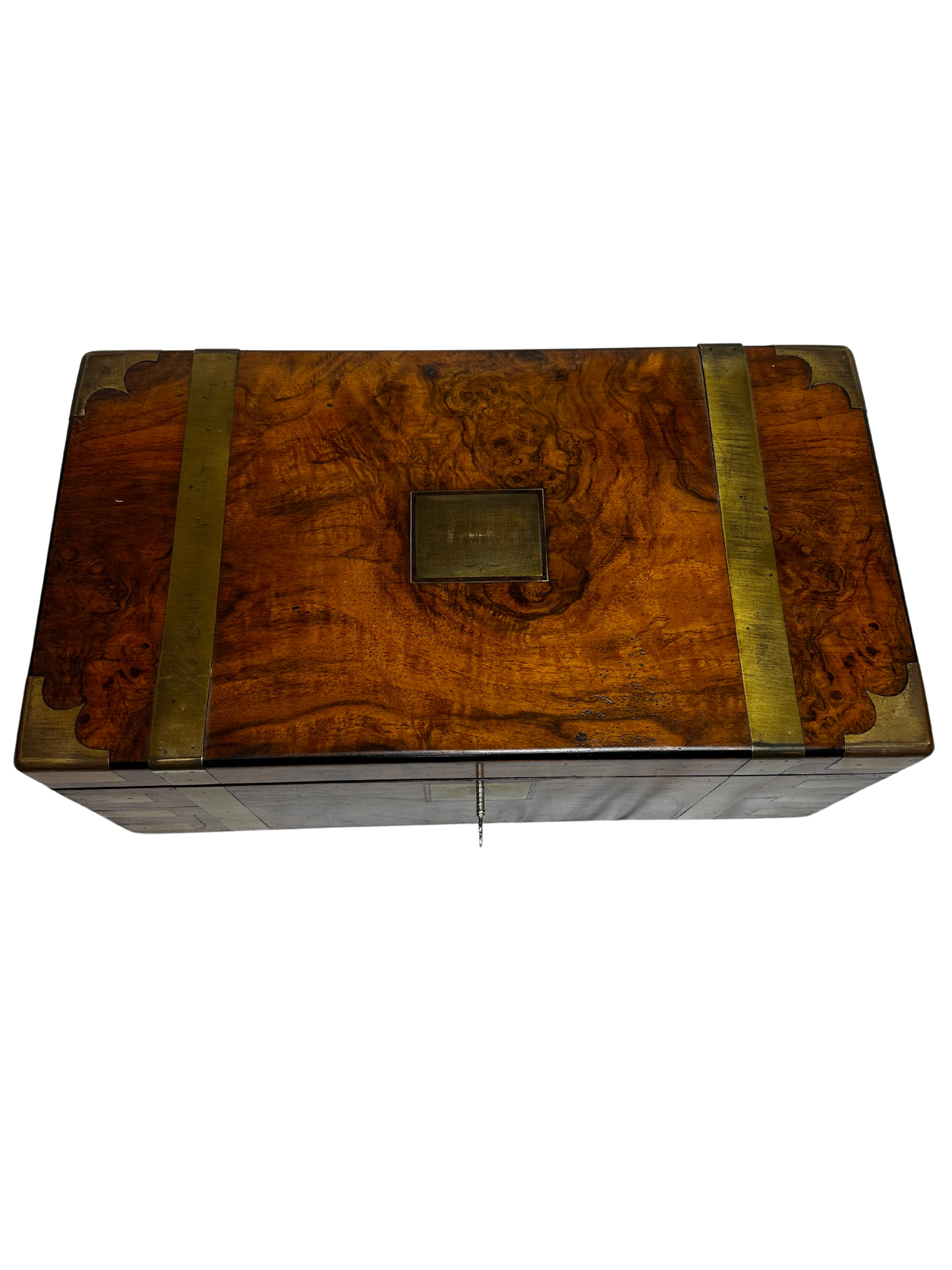
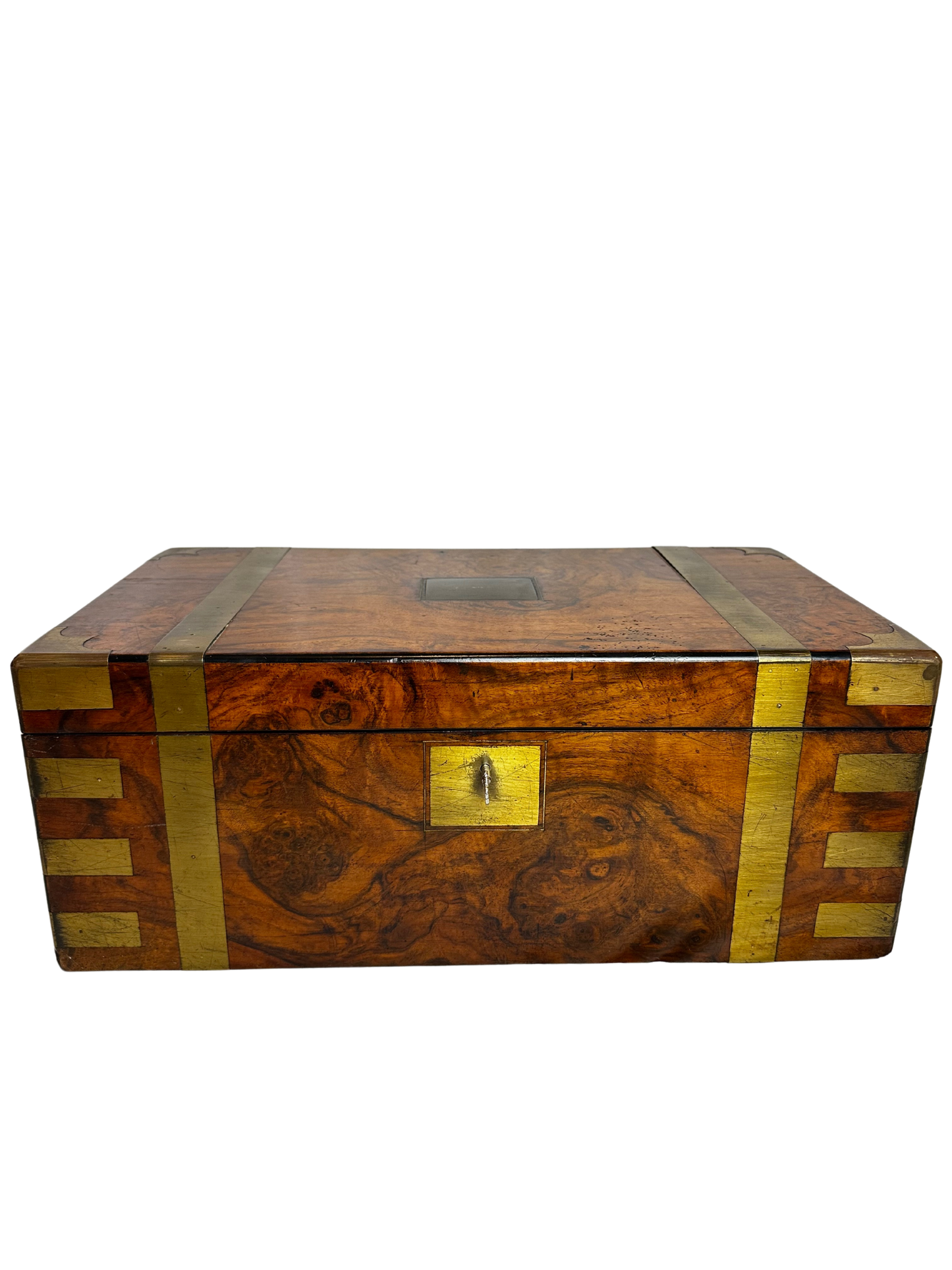
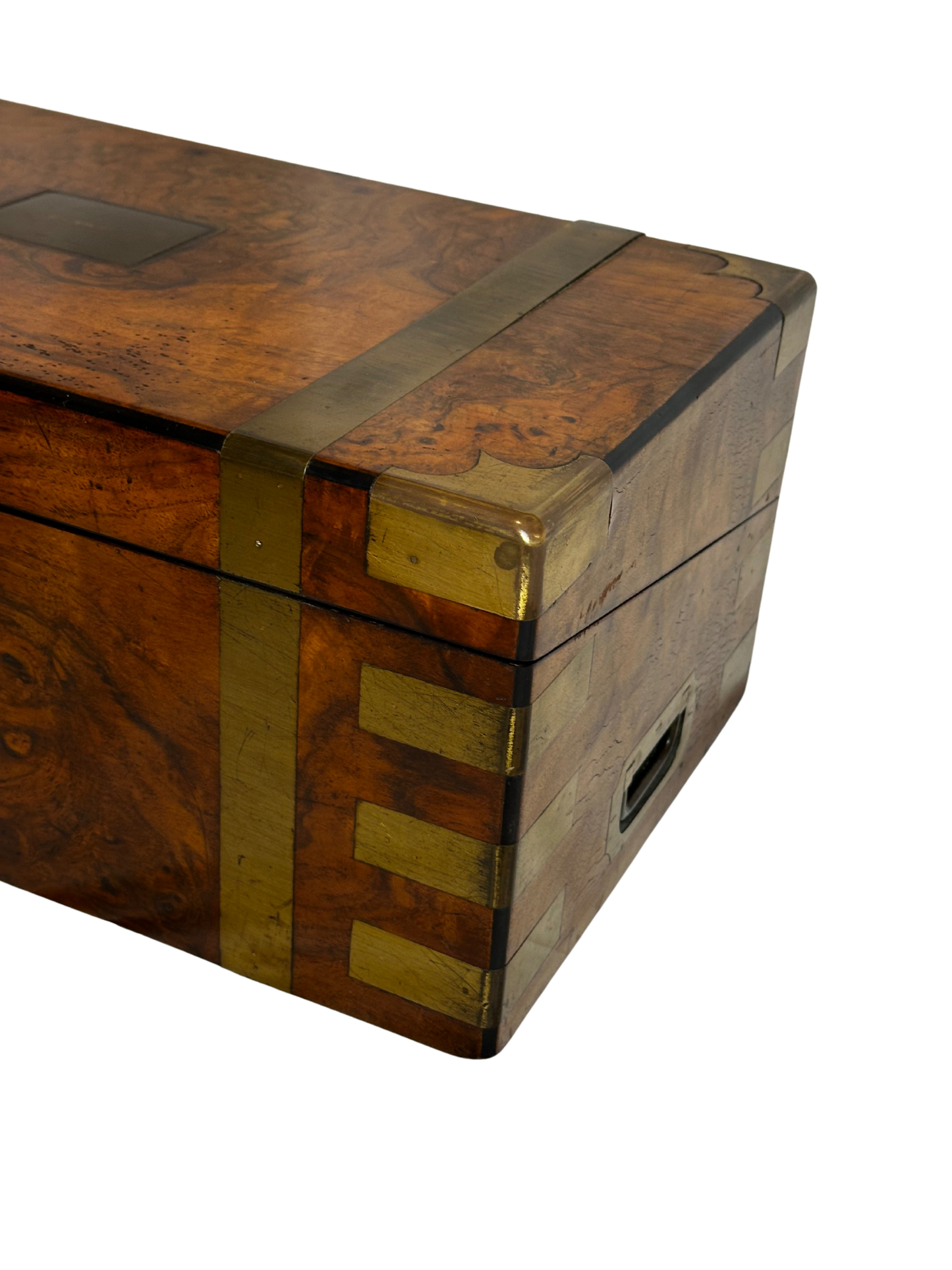
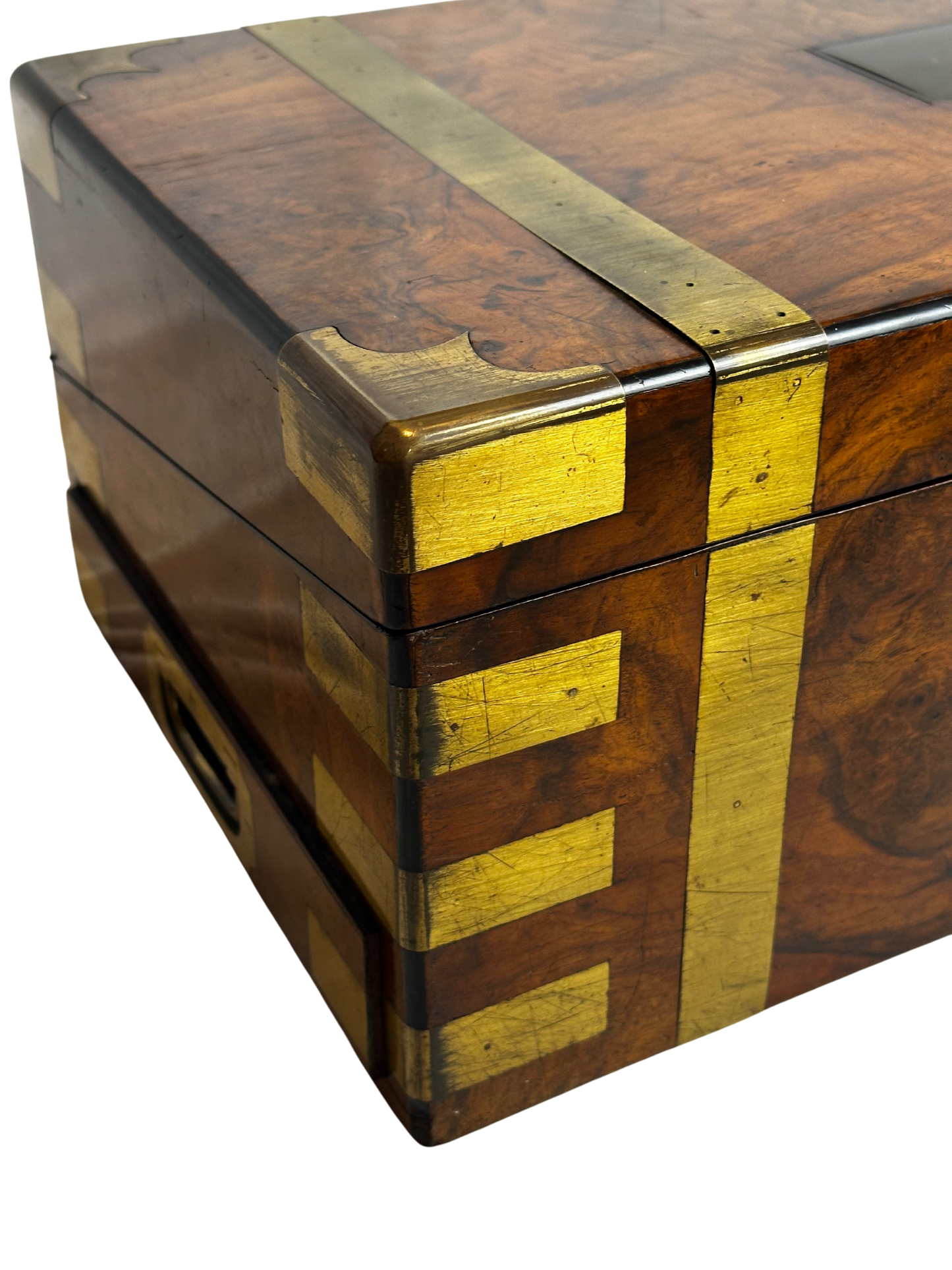

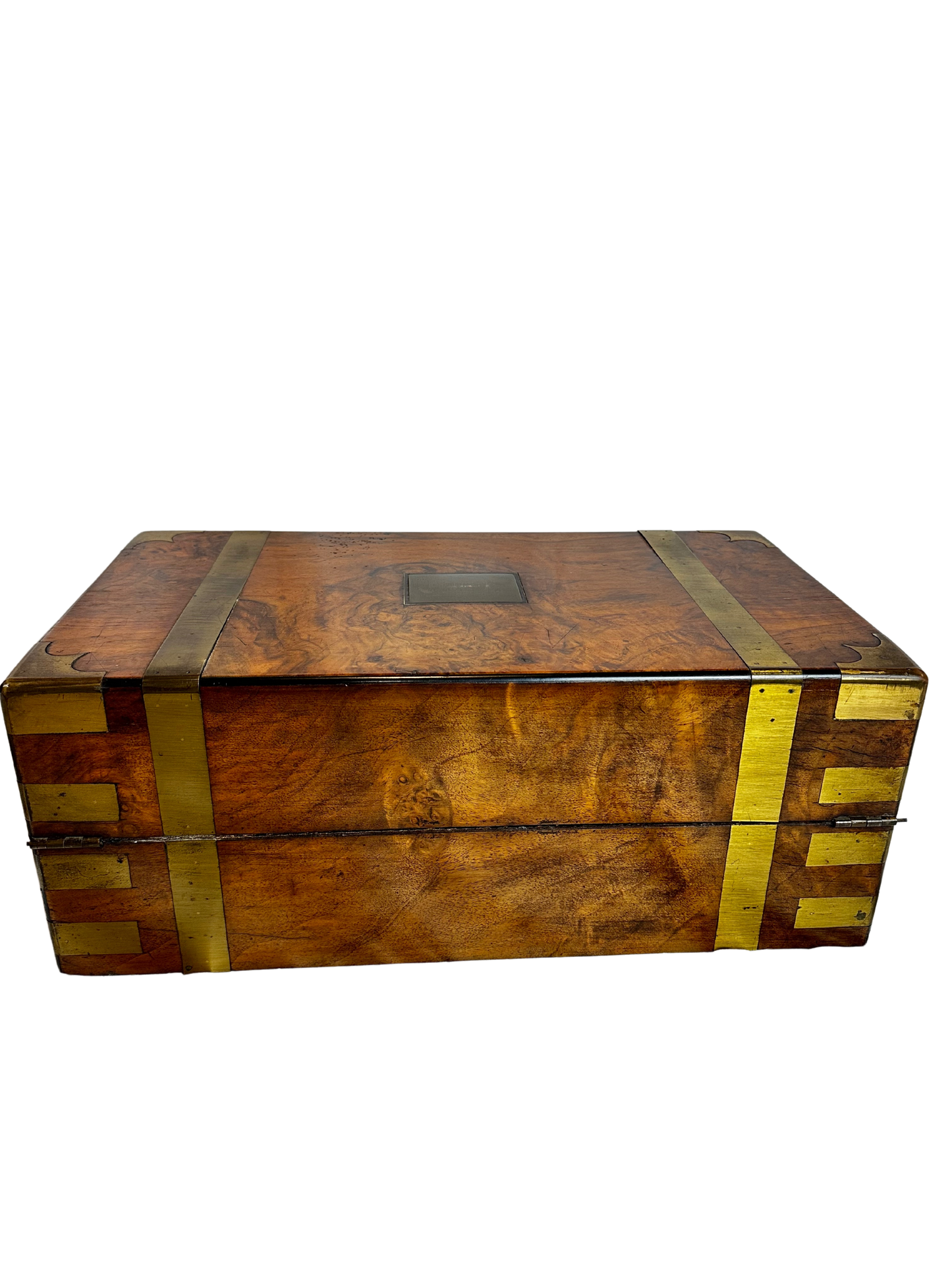


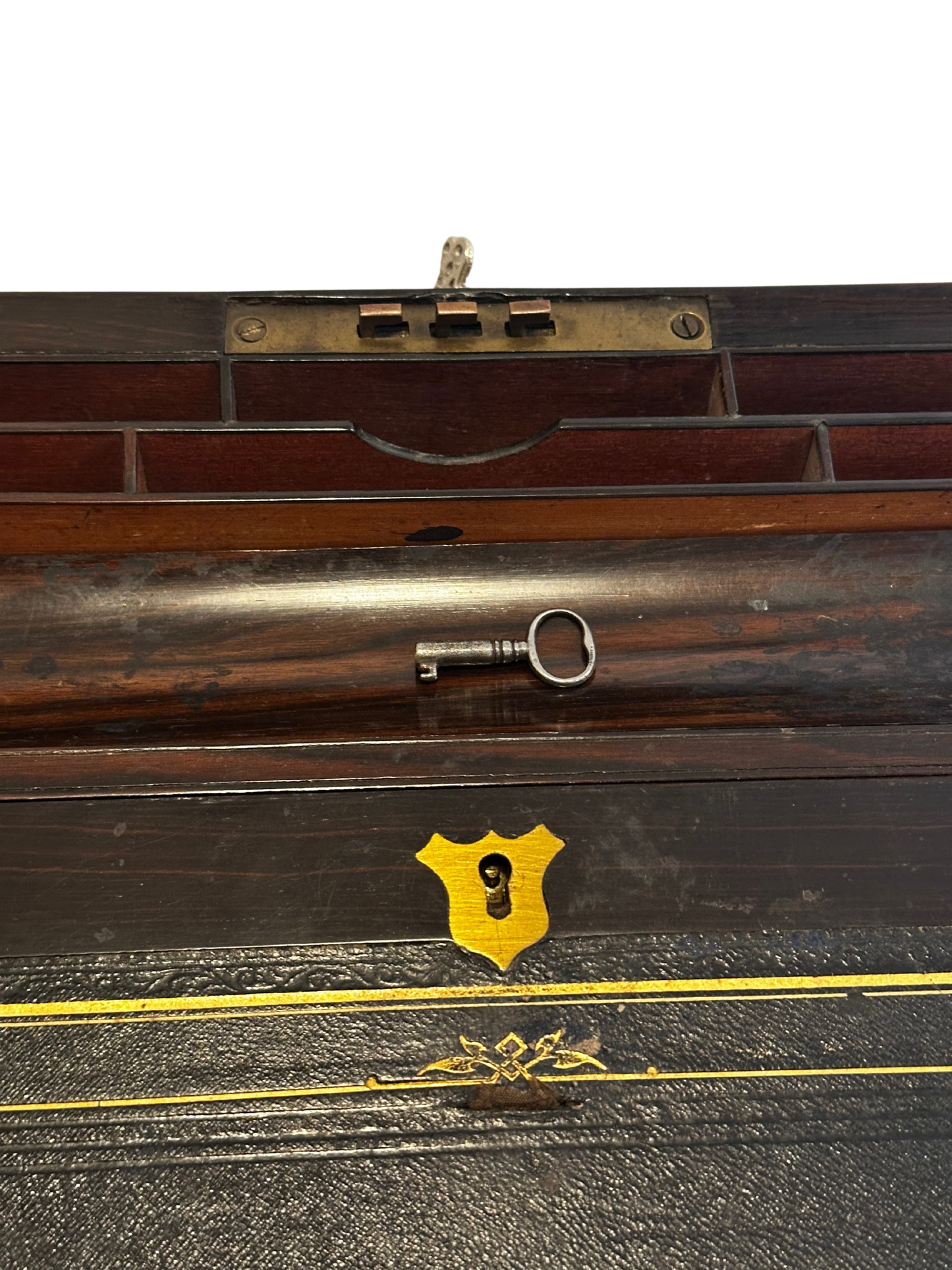



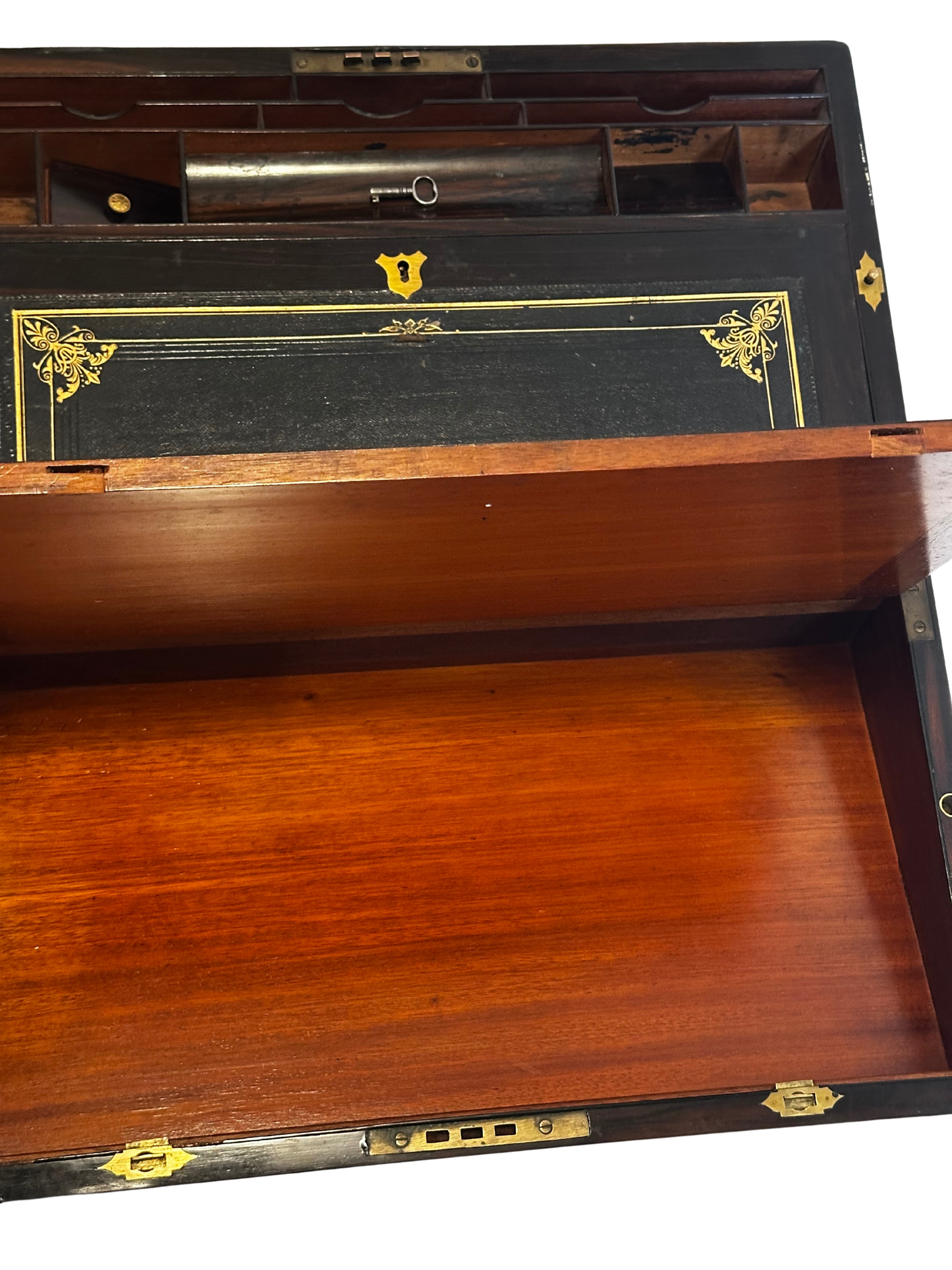
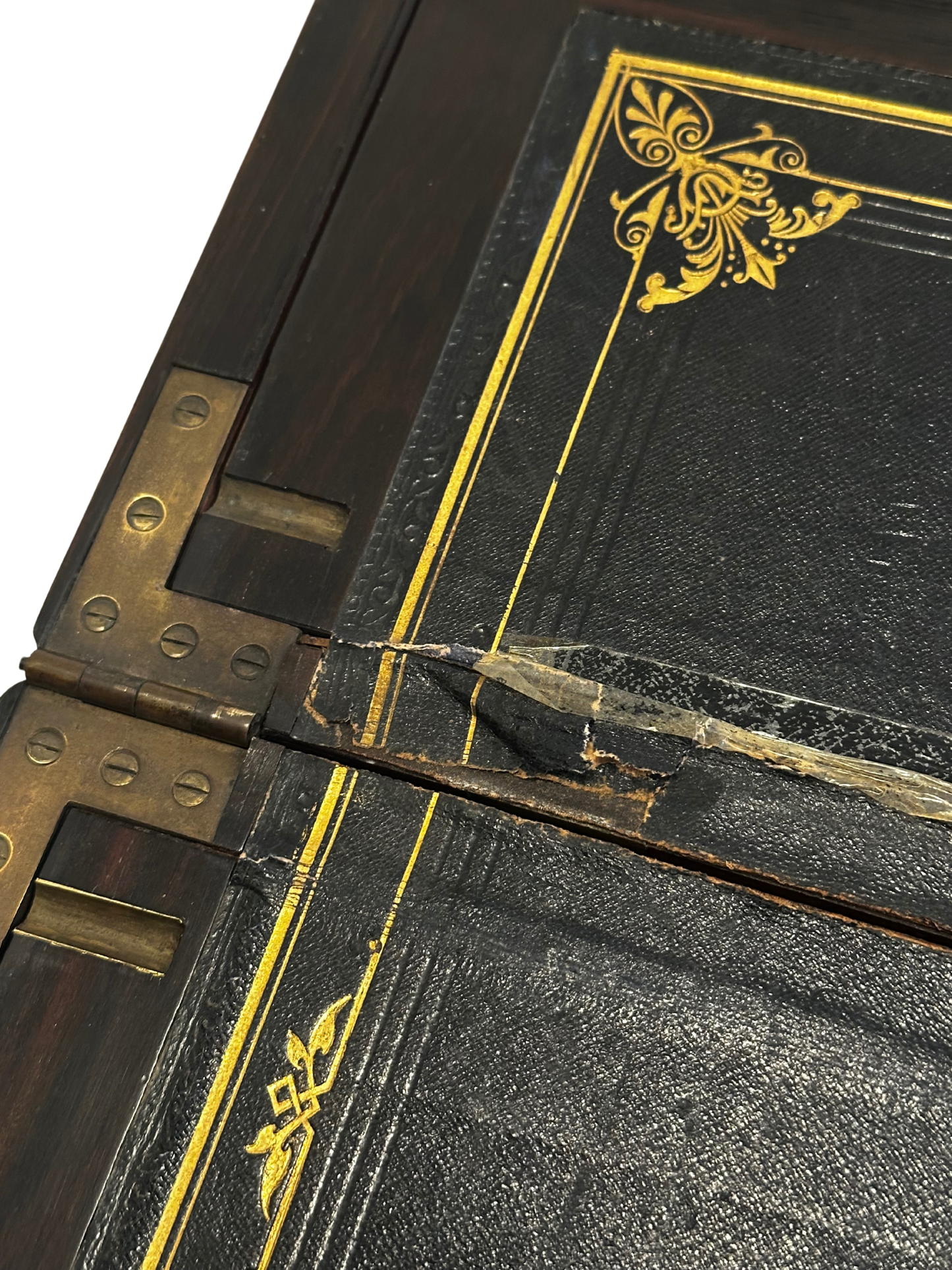



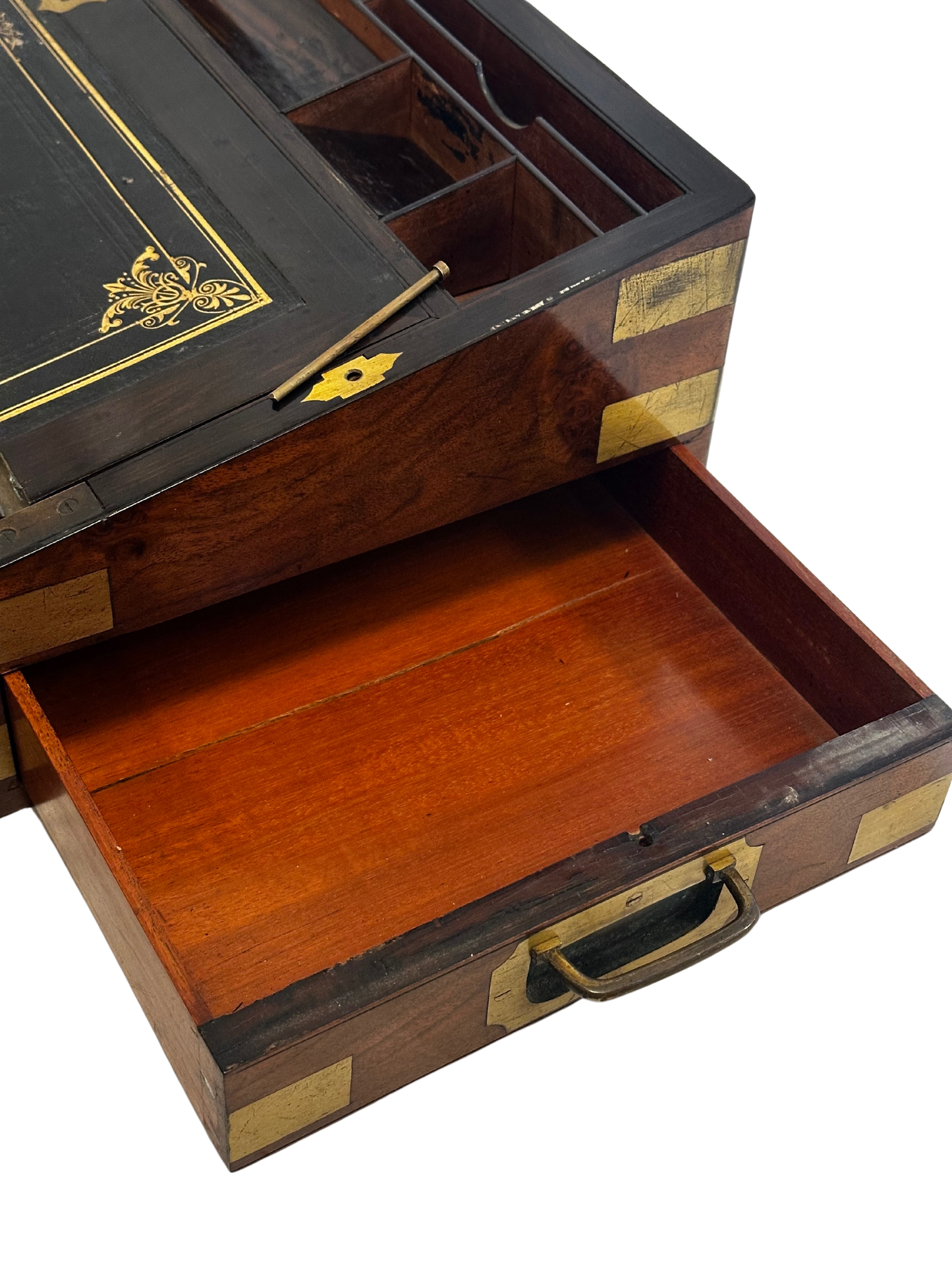
Late 19th C English Brass-Bound Walnut Writing Slope/Campaign Desk
Hinged lid with central cartouche with worn inscription that looks like "Mr. Davidson"
Opens to an interior fitted with pen and ink receptacles, gilt embosses inset leather writing surface, opening further to storage with secret compartment drawers.
Case with dual handles at sides, one side fitted with small drawer, opening when pin on inside is removed.
Late 19th C English Brass-Bound Walnut Writing Slope/Campaign Desk
Hinged lid with central cartouche with worn inscription that looks like "Mr. Davidson"
Opens to an interior fitted with pen and ink receptacles, gilt embosses inset leather writing surface, opening further to storage with secret compartment drawers.
Case with dual handles at sides, one side fitted with small drawer, opening when pin on inside is removed.
19.75"w x 10.75"d x 8"h
19.75"w x 10.75"d x 8"h
Writing slopes were portable writing desks designed to provide a smooth, angled surface for writing during travel and often included compartments for storing writing materials such as ink, quills, and paper.
The concept of a portable writing desk dates back to ancient times. In the medieval period, scribes used simple wooden or leather writing surfaces to facilitate their work. The modern writing slope as we recognize it began to take shape in the 17th and 18th centuries, particularly in England and France. Wealthy travelers, merchants, and military officers needed a convenient way to write while on the move.
Early writing boxes were often simple wooden cases with a sloped lid that could be propped open for writing. These were used by diplomats and military officers who needed to maintain correspondence while traveling.
By the late 18th and early 19th centuries, writing slopes became more sophisticated, reflecting advancements in craftsmanship and materials. They were commonly made from mahogany, rosewood, or walnut, often inlaid with brass or decorated with fine marquetry. Inside, they featured storage compartments for ink bottles, sand shakers (used to dry ink), sealing wax, and even secret drawers for private documents.
Many writing slopes were custom-made for officers in the British military, aristocrats, and traveling professionals, as letter writing was essential for communication before the advent of the telephone.
Famous users of writing slopes included Lord Nelson, Charles Dickens, and Jane Austen. Austen, for example, wrote many of her letters and manuscripts using a writing slope.
The Victorian period saw an explosion in the popularity of writing slopes, especially as literacy rates rose and letter writing became a social necessity. Many writing slopes from this period featured lockable compartments, fold-out extensions, and elaborate decorative elements such as mother-of-pearl inlays and fine brass mounts.
With the rise of typewriters in the late 19th and early 20th centuries, the use of writing slopes gradually declined. However, they remained in use by travelers and officers well into the early 20th century.
Today, antique writing slopes are highly collectible, appreciated for their craftsmanship and historical significance.
Writing slopes were portable writing desks designed to provide a smooth, angled surface for writing during travel and often included compartments for storing writing materials such as ink, quills, and paper.
The concept of a portable writing desk dates back to ancient times. In the medieval period, scribes used simple wooden or leather writing surfaces to facilitate their work. The modern writing slope as we recognize it began to take shape in the 17th and 18th centuries, particularly in England and France. Wealthy travelers, merchants, and military officers needed a convenient way to write while on the move.
Early writing boxes were often simple wooden cases with a sloped lid that could be propped open for writing. These were used by diplomats and military officers who needed to maintain correspondence while traveling.
By the late 18th and early 19th centuries, writing slopes became more sophisticated, reflecting advancements in craftsmanship and materials. They were commonly made from mahogany, rosewood, or walnut, often inlaid with brass or decorated with fine marquetry. Inside, they featured storage compartments for ink bottles, sand shakers (used to dry ink), sealing wax, and even secret drawers for private documents.
Many writing slopes were custom-made for officers in the British military, aristocrats, and traveling professionals, as letter writing was essential for communication before the advent of the telephone.
Famous users of writing slopes included Lord Nelson, Charles Dickens, and Jane Austen. Austen, for example, wrote many of her letters and manuscripts using a writing slope.
The Victorian period saw an explosion in the popularity of writing slopes, especially as literacy rates rose and letter writing became a social necessity. Many writing slopes from this period featured lockable compartments, fold-out extensions, and elaborate decorative elements such as mother-of-pearl inlays and fine brass mounts.
With the rise of typewriters in the late 19th and early 20th centuries, the use of writing slopes gradually declined. However, they remained in use by travelers and officers well into the early 20th century.
Today, antique writing slopes are highly collectible, appreciated for their craftsmanship and historical significance.
19th Century / Victorian
19th Century / Victorian
Walnut wood, brass, leather
Walnut wood, brass, leather
Austin, TX Auction / English
Austin, TX Auction / English
The top compartment is detached as noted in the photos, but it still locks/requires the key to open. There is some damage to the leather writing surface as depicted in the photos. The hidden side drawer sticks out just slightly but still locks with the pin on the inside. General wear with age on the writing surface
The top compartment is detached as noted in the photos, but it still locks/requires the key to open. There is some damage to the leather writing surface as depicted in the photos. The hidden side drawer sticks out just slightly but still locks with the pin on the inside. General wear with age on the writing surface



















